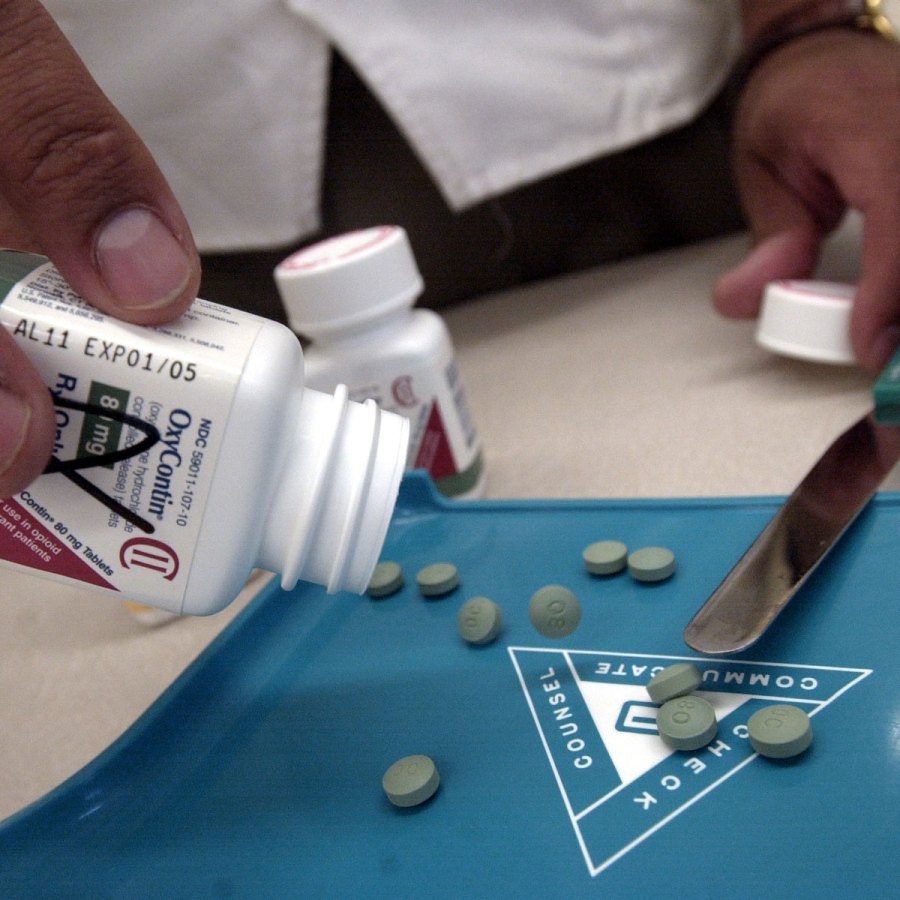A new piece of the opioid crisis origin story, revealed

Opioid overdoses have killed more than 400,000 people since 1999, but some states have been hit much harder than others.
“If you look at a map of overdose rates, you’ll notice that Texas has a very low [rate] relative to its neighbors,” said David Powell, a senior economist at the RAND Corp. “And the same with California and New York. And so that has always kind of been sort of a mystery.”
But a new working paper by Powell and researchers at Notre Dame and UPenn, drawing on our reporting, shows how variation in drug regulations meant some states were hit especially hard by the deadliest drug epidemic in American history, while others were spared the worst. Regulation wasn’t the only driver of the opioid crisis, but according to the paper it was an important one, even after the regulations in question became obsolete.
At issue here is an old drug regulation program in so-called triplicate states. When doctors prescribed strong Schedule 2 narcotics like OxyContin, they kept one copy of the prescription, another copy went to the pharmacist and the third went to state regulators where it was entered into a database that was monitored for signs of improper prescribing.
In 1996, Illinois, Idaho, Texas, New York and California had triplicate programs, representing just a handful of states but seven of the 10 largest cities in the country. These were important markets for drugmaker Purdue Pharma, which was bringing OxyContin to market.
Purdue, which has filed for bankruptcy and is restructuring as a public trust to settle lawsuits related to the epidemic, declined to comment.
The researchers found that by 2000, states without a strict triplicate drug regulation program had two and a half times more OxyContin prescriptions per capita than states with those programs. States without the triplicate regulations also had a higher rate of overdose deaths, a trend that has continued even 20 years later.
The last triplicate regulation was repealed in 2004, and while pretty much every state has a new prescription drug monitoring program now, the vestiges of the ’90s rules are still visible today. Researchers estimate non-triplicate states would have seen 44% fewer opioid overdose deaths from 1996 to 2017 if they had the tighter regulation of their neighbors.
References to triplicate states are all over Purdue’s internal documents. When we were reporting season two of “The Uncertain Hour” in 2017, we uncovered dozens of previously sealed documents at a West Virginia County courthouse. Within the dozens of pages of depositions and memos was a secret 1995 focus group report created by outside consultants to help Purdue market OxyContin to doctors.
At that time, strong painkillers were mostly prescribed to cancer patients and people in hospice care. But Purdue wanted to expand the market to include people with all kinds of moderate to severe pain: arthritis, bad backs, patients recovering from surgery. Purdue wanted to position OxyContin as being less prone to abuse and safer than the competition.
After publishing our podcast about the claims Purdue made in marketing OxyContin, a few researchers including Powell reached out asking for the unsealed focus group report (which is available here, by the way).
“The main thing that stood out of the documents was that Purdue Pharma was very worried about states with these triplicate prescription programs,” Powell said. “They saw them as a significant barrier to entry of the product and they even recommended targeting less promotional activity to states with these programs.”
Doctors in triplicate states were less likely to prescribe OxyContin for non-cancer pain, the focus group report said, so it should only be marketed to doctors in non-triplicate states.
Neither we nor the researchers could get hold of any kind of state-by-state marketing budget from Purdue. But researchers were able to analyze gifts and payments made to doctors around the country. The amount of money spent per doctor was 42% to 72% lower in triplicate states.
Powell’s team also found a 1999 budget line item for $750,000 to fund a “program to impact the regulatory environment for opioid prescribing in triplicate states.” That’s budget-speak for lobbying.
This is the first academic research paper devoted to the regulatory environment during the very early days of the opioid epidemic. It offers further proof that OxyContin helped ignite this crisis.
For more on America’s drug war and what the opioid epidemic looks like on the ground, listen to season three of “The Uncertain Hour.”
The future of this podcast starts with you.
This season of “The Uncertain Hour” tells the unheard stories of real people affected by the welfare-to-work industrial complex.
Stories like these are seldom in the limelight. It takes extensive time and resources to do this type of investigative journalism … to help you understand the complexity of our economy and to hold the powerful to account.
We need your support to keep doing impactful reporting like this.
Become a Marketplace Investor today and stand up for vital, independent journalism.




















